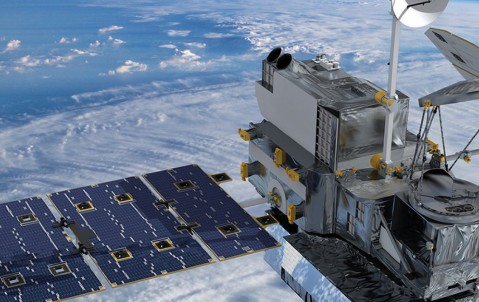
Insuring the new space race
A massive solar storm erupts, temporarily disabling the 1100 satellites that orbit the Earth. At first, disruption seems minimal: TV stations are forced to stop broadcasting. But then the situation starts to get more serious. Planes around the world are grounded as airline pilots lose touch with air traffic controllers; the world’s money markets stop trading; global communications systems fail; and power cuts begin. By the end of the day, governments, fearing public disorder, order the army onto the streets and impose curfews.
This nightmare scenario - increasingly more likely to be fact than fiction - illustrates just how reliant society has become on space technology. In turn, this dependence is providing huge new opportunities and challenges for the space insurance sector not only in terms of covering the sometimes hazardous risk of launching and operating new satellites, but also meeting the growing liability risk as space technology becomes ever more part of our day-to-day lives.
If the first space race was all about going to the moon, the prize for today’s space race is more about the integration of space dependent technology in modern society
Space at the touch of a button
If the first space race was all about going to the moon, the prize for today’s space race is more about the integration of space dependent technology in modern society. There are 1 billion GPS receivers already in use today for example, a figure which is expected to grow to 7 billion by 2022. And satellites have transformed our TV viewing from 800 analogue channels in 1991 to more than 25,000 digital channels today.
“Many people don’t realise how much they are already using space,” says Pascal Lecointe, Space Line Underwriter for Hiscox London Market. “The most obvious example is TV broadcasting via satellite, but there are plenty of other space dependent applications: weather forecasters rely almost entirely on weather observation satellites. While without GPS, you wouldn’t be able to get cash out of a cash machine.”
Consequently, it’s no surprise that global satellite industry revenues have rocketed. In 2008, the Satellite Industry Association estimated total satellite industry revenues at $144.4 billion. By 2013, the figure had risen to $195.2 billion, including $118 billion for satellite services (such as TV, radio, broadband); $15 billion for satellite manufacturing; $5 billion for the satellite launch industry itself; and $55.5 billion for satellite-related ground equipment such as GPS devices and satellite dishes.
Space plc
This growth in space business has been characterised by a marked swing from the public to the private sector. "Up to now a large fraction of space activity has been driven by states for military use and largely funded through government bodies such as NASA, the European Space Agency or the Japanese Space Agency." says Hiscox's Lecointe. "Recently however we've seen a number of private companies successfully entering the space industry and space application world. Governments and space agencies, which were ordering and building space hardware themselves, are now shifting towards buying services from private companies. NASA no longer launches shuttles to the International Space Station (ISS) but contracts Space X to deliver its ISS supplies." Google also recently announced it was investing $500 million to buy a company planning to launch a constellation of mini-satellites, which it will use to do the mapping work that it previously used to buy from satellite imaging companies.
International crackdown
The space business has astronomical risks, however. Currently, the commercial satellite world relies mainly on two launch providers; the European Space Agency’s Ariane rocket and Russia’s Proton vehicle. The Proton however has been beset with a series of failures, the most recent of which in May, saw the rocket third stage fail less than ten minutes after lift-off. The rocket stages and the satellite completely burned up when re-entering the upper atmosphere above the Chinese-Russian border at a speed of 7km per second. This followed an explosion in July 2013 and the loss of another Proton-M rocket in 2010, complete with its payload of three satellites. “The Russian space industry has experienced a lot of failures, which presents a challenge for satellite operators and insurers alike. There is a big question mark over how the Russian space industry addresses its reliability issues,” says Lecointe. “Proton launches will be delayed until the rocket design is modified to address the failures, and unless premium for the launch phase increases to reflect the increased level of risks, insurers will be reluctant to cover it.”
Governments and space agencies, which were ordering and building space hardware themselves, are now shifting towards buying services from private companies
Other operators could be close to adding to the number of launch providers which again, will mean new opportunities for insurers adds Lecointe: “Once the first two or three launches have been satisfactory, the market is ready to cover new providers (and actually we already have in some cases), assuming that the premium is in line with a rocket which will have a much shorter operating track record than the Ariane and Proton rockets.”
This private sector boom in the satellite launch business is good news for insurers. "Governments tend to self-insure their own space activity. Private companies, with investors and shareholders to answer to, need to mitigate any potential losses, which provides an opportunity for the insurance industry," says Lecointe. In 2011, the Organisation for Economic Cooperation and Development put total premium volume at around $800 million a year. That figure will only grow as the private sector sponsors more satellite launches.
Meeting the growing liability
It’s not just the need for traditional launch and in-orbit insurance cover for an expanding satellite market which is exciting, adds Lecointe, but also the new areas for liability coverage. “Up to now, there has usually been a waiver of liability in place for space applications because of their complexity, but now, with space playing a bigger and bigger role in day-to-day life, liability coverage will become more important. If a satellite fails for example, businesses who rely on satellite services to function, will want to claim for lost income or expenses occurred.”
What if the doomsday scenario of collective satellite failure occurs, creating huge global disruption? Could insurers face catastrophic losses following a huge solar storm similar to the Halloween storms of 2003 and Quebec in 1989? “Yes this is a possibility,” warns Lecointe, but the possible cost to the insurance industry is not yet clear. “One of Lloyd’s space realistic disaster scenarios actually considers a solar storm effect. It only takes into account satellite hull values at present, but if we start to provide ground liability, this will have to be added.”
With space playing a bigger and bigger role in day-to-day life, liability coverage will become more important
Winning the space race
With high demand for existing space insurance products as well as new potential areas of coverage – the anticipated launch of Virgin Galactic could herald a whole new dawn for space tourism, for example – the London Market is well placed to take advantage of this new demand, concludes Lecointe. “London insurers have always been able to tailor new coverage and provide answers to clients’ new requirements. As more satellites are launched, more space-related applications developed, and more potential liabilities emerge, London has a great opportunity to cement its leading global position in the space race.”
Sheltering from the solar storms
"Space weather can affect human safety and economies anywhere on our vast wired planet, and blasts of electrically-charged gas travelling from the Sun at up to five million miles an hour can strike with little warning," UK Government’s former Chief Scientific Adviser.
- 1859 – The Carrington superflare set fire to telegraph stations in North America and Europe.
- 1972 – Solar flare knocks out telecommunications in some US states
- 1989 – Quebec blackout following a solar storm, cuts power and heat to millions of people
- 2000 – Bastille Day solar storm knocks out radio stations
- 2003 – Halloween solar storms temporarily disabled dozens of satellites
- 2012 – July 23 sees massive solar storm as the Sun forces out a plasma cloud at a speed of 3,000km per second. NASA calculated that had the storm erupted a week earlier, the cost would have been 20 times the devastation caused by Hurricane Katrina.
